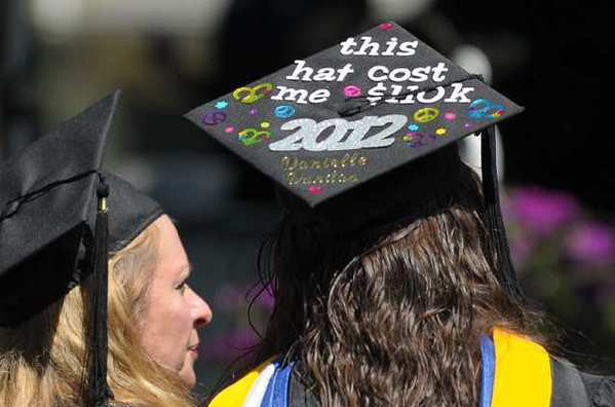
Student loan default rates have nearly doubled in the past decade, creating the perception of a student debt crisis. But that perception is wrong according to researcher Max Eden at the Manhattan Institute.
Most graduates who borrowed to attend a four-year university face no debt crisis. It is students who attended, but often did not complete, lower-quality for-profit and two-year public institutions who are facing financial hardship.
Key findings of Eden’s research are:
Even as overall student debt has been rising, the monthly burden on most borrowers has not increased.
- 50% of borrowers have monthly payments of $203 or lower, and another 25% have payments between $203 and $400.
- Since those with at least some college enjoy an average monthly earnings premium over high school grads of $750, the financial return on college investment more than doubles the monthly cost. Moreover, the mean payment-to-income ratio has fallen from 15 percent to 7 percent.
Those struggling with student debt are overwhelmingly “nontraditional borrowers” who took out loans to attend, but often did not graduate from, two-year and for-profit institutions.
- 70% of the students who left school and started to repay federal loans in 2011 — and then fell into default by 2013 — were non-traditional borrowers. An additional 12% of defaulters attended non-selective four-year universities.
- The number of nontraditional students swelled after 2008 to represent almost half of all new borrowers.
- The majority of students whose loans end up in default leave school with less than $10,000 in debt.
Eden argues that current proposals to fix the perceived student loan crisis are misguided. A free-college proposal, for example, would not cover non-tuition fees (which are often larger than tuition fees), and that would negatively affect students from low-income families far more than those from higher income families.
The better solution, he suggests, is to require colleges — public and private, non-profit and profit — to have skin in the game of student debt.
Real higher-education reform wouldn’t regulate and reward by tax status; it would realign the incentives of all schools to better serve students. College … should have skin in the game on loan repayment; if students can’t pay back their loans, the school should be on the hook for a portion of the unpaid balance. Even a small amount of risk would give postsecondary institutions a reason to contain their costs and offer a better education.
Source: Is There a Student Debt Crisis? Max Eden, Manhattan Institute

